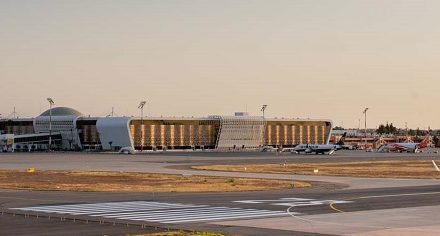
Namib Mills

Namib Mills occupies an extensive site in Windhoek’s Northern Industrial Area where the miller has consistently grown the extent and depth of its infrastructure to process and distribute cereals for the entire country.
Its most notable investment to date is a US$72 million poultry plant and an N$85 million pasta plant with a capacity to produce, 2100 kilograms per hour in short form such as macaroni and elbows and 1500 kg per hour in long form such as spaghetti.
This week, Koos Ferreira, technical liaison specialist at Namib Mills explained its operations to the Economist.
Meteorologists expect Namibia to experience average to below average rainfall this year. Has this dampened Namib Mills’ expectations? It appears not so, as Ferreira explains, “we are cautiously optimistic that we will have a good 2015. With the current drought situation there could be a serious distortion in the economic position of a number of people. Past experience has proved that a good agricultural year also is a good economical year for the country. The contrary is also true. Disposable income on various fronts may be seriously hampered.” Adds Ferreira, “maize meal normally substitutes the shortage of mahangu in a drought year. The additional maize required to be milled will be imported from South Africa.”
Namib Mills’ production facility in Windhoek consists of a wheat mill, a maize mill, a pasta plant, a complete mix plant, a rice packing plant and a sugar packing plant. In Otavi, it operates a maize mill, a mahangu mill and a sugar packing plant, while a mill in Katima Mulilo supplies the Zambezi Region with maize meal.
According to Ferreira, the total maize milled in Namibia in a normal year is roughly 150,000 tons, wheat contributes another 100,000 tons while between 60,000 and 70,000 tonnes mahangu is consumed. “In the case of maize roughly 50% is produced locally on a long term average, but this year it may only be 30% due to the drought. Wheat is roughly 15% local, 85% imported and since most wheat is produced under irrigation, this year will remain the same,” says an optimistic Ferreira.
“A normal mahangu crop is from 60,000 to 70,000 tons per annum. This year’s crop will be much lower. The shortfall will most likely be compensated by the usage of maize meal and a higher consumption of maize meal can be expected. Whatever is short from local production will have to be imported,” he explains.
“Namib Mills is the market leader in maize milling, wheat milling, commercial mahangu milling and pasta production,” says a confident Ferreira adding that they source about 50% of their white maize requirements from South Africa in normal years and about 85% of their wheat requirements from wherever they obtain the required quality at the best price. “We source whatever mahangu we can locally and the shortfall, from India. 100% of our pasta is manufactured locally while all rice is imported. Most of the sugar is sourced from South Africa.”
Namib Mills is engaged in maize milling, wheat milling, mahangu milling, pasta production, sugar packing and rice packaging. Its products range include such household ringers as Top Score, Bakpro, Meme Mahangu, Pasta Polana, Rice King and Sugar King.
“A large portion of our products are distributed through the major chains and retail trade with whom we have an excellent relationship. Likewise we attempt to build a relationship with the small and medium enterprises and cuca shops in the outlying areas to enhance their position.” According to Ferreira, this ties in with Namib Mills’ corporate social investment initiatives saying that Namib Mills is currently engaging small and medium enterprises in Katutura and cuca shops in the Oshikoto, Ohangwena, Omusati and Oshona regions.
“Our route to market hinges on servicing all customers throughout the country, irrespective where they are. That is our competitive advantage, achieved through 10 depots spread across the country: Three are located in the south and include Oranjemund, Keetmanshoop, Mariental, three across central Namibia which include Windhoek, Gobabis and Walvis Bay, three in the north which include Otjiwarongo, Otavi, Ondangwa and a tenth depot situated in the far north east in Katima Mulilo,” says Ferreira.
Regarding distribution costs and the large areas they serve, he says “It must be stated that the reduction in fuel price is most welcome and is assisting to curb price increases.
Distribution costs in Namibia, where vast distances have to be covered are a factor to be reckoned with and often blamed for unrealistically inflated prices. Obviously the fuel reduction has a positive effect to contain delivery costs.”
According to him, raw material prices, exchange rate fluctuations and freight costs are the main price determinants. Concludes Ferreira, cautiously “Price adjustments will largely depend on the international price for raw materials as well as exchange rate fluctuations. Since neither can be accurately predicted I can not forecast the remainder of 2015.”











































